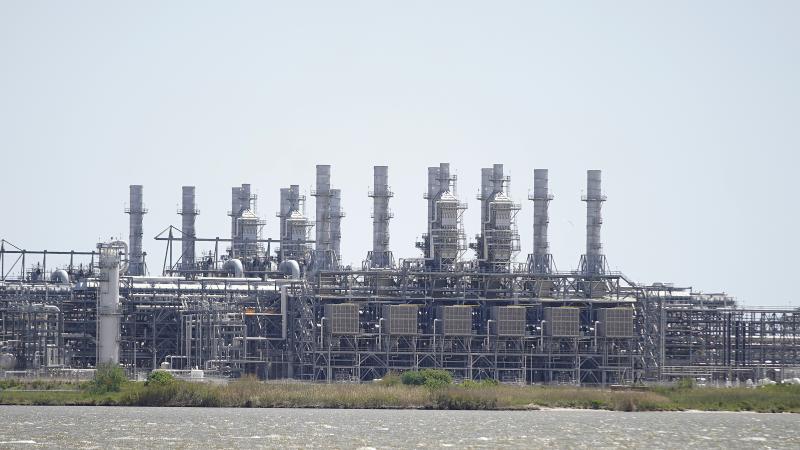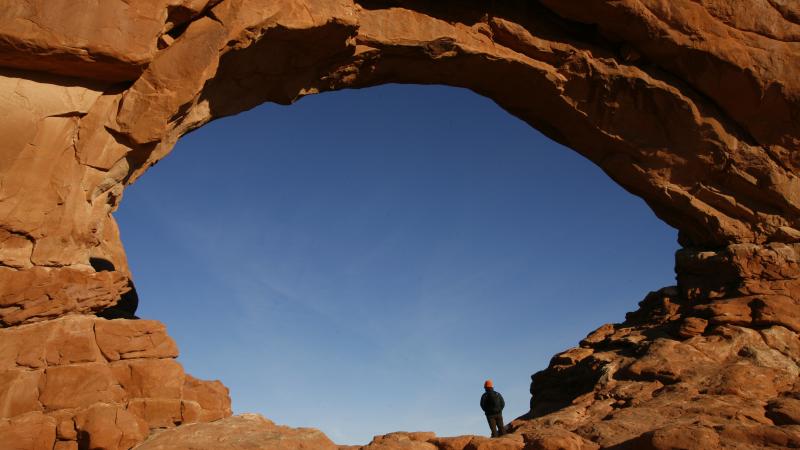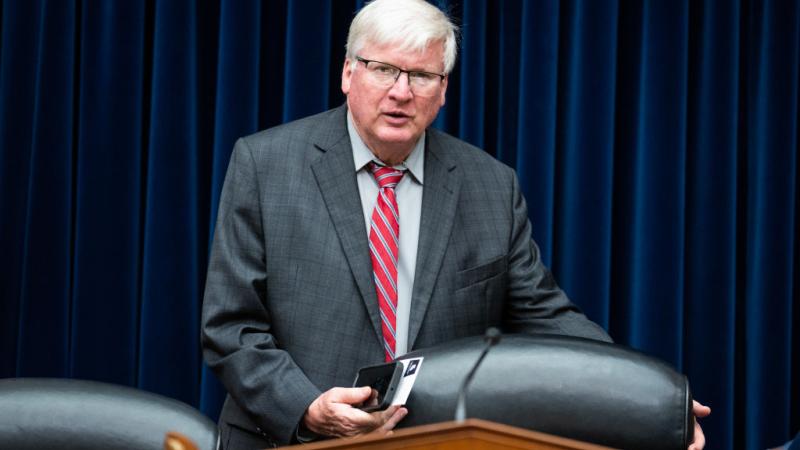Trump puts 10 mining projects on fast-track list, some have languished in permitting for decades
The ten projects fast-tracked in Trump’s executive order include coal, phosphate, potash and lithium projects. Some have been in development for decades and some are in the initial exploration phase.
Secretary of the Interior Doug Burgum announced Wednesday that energy projects that usually take a year or two to obtain permits would have their permitting processes shrunk down to as little as 28 days. The new procedures apply to a wide range of projects, including coal, uranium and critical minerals.
The announcement comes less than a week after President Donald Trump issued an executive order aimed at advancing critical mineral projects with greater transparency in the permitting and review process for 10 specific mining projects. The order sets up a Federal Permitting Dashboard to enhance interagency coordination and decision-making.
“This tool will play an invaluable role in ensuring that these projects receive the most efficient review and authorization process possible in order to bring the benefits of next generation infrastructure to communities across the nation,” Manisha Patel, acting executive director at the Permitting Council, said in a statement.
Lawfare delays
Burgum’s procedures apply to permitting processes under the National Environmental Policy Act (NEPA), Endangered Species Act, and the National Historic Preservation Act. The NEPA process alone can take several years, but litigation, economic and engineering challenges can stretch the time to open new mines by decades. Most of the litigation comes from environmental groups, and environmental groups are already raising alarms about the Trump administration’s truncated review periods.
“Energy projects need to come online faster, but not at the expense of the health and safety of our communities. Slashing the environmental review process by this much will cause significant harm,” Kevin Zedack, government affairs specialist with Appalachian Voices, said in a statement.
An S&P Global study last year examined 268 average development times from discovery to production across the globe and determined that on average, new mines in the U.S. take 29 years to begin production.
Of the U.S. projects the researchers examined, only three had come into production in the U.S. since 2002, while another 10 had been in development for decades. One had been in development since 1978.
The ten projects listed in Trump’s executive order include coal, phosphate, potash and lithium projects. Some have been in development for decades and some are in the initial exploration phase. It’s not clear how effective the Trump administration’s actions will be in expediting these projects. In some cases, they may still be many years from entering production.
Resolution Copper Project
In 1995, a copper deposit was discovered near a campground in Arizona, according to Mining.com. Nine years later, Rio Tinto and BHP co-founded Resolution Copper Company to develop the find. Some Native Americans consider the land sacred, and they began voicing their opposition.
In 2009, the company dug a 7,000-foot mine shaft, the deepest in the U.S. The process took five years. In 2013, Resolution Copper spent $750 million to collect engineering data, and it initiated the federal permitting process.
In the years that followed, the opposition from tribal groups intensified. The San Carlos Apache Tribal Council voted unanimously to oppose the project. In its last days, the first Trump administration published the environmental impact statement on Resolution Copper, and years of litigation from tribal and environmental groups has followed since.
In March 2021, former President Joe Biden rescinded the environmental impact statement. One of the lawsuits filed by tribal groups is under consideration by the Supreme Court. If the court declines to hear the case, federal agencies will likely issue final permitting documents. If the court proceeds with review, it’s unclear how it will impact permitting.
Stibnite Gold Project
Perpetua Resource’s Stibnite Gold Project, in central Idaho, produced 90% of the antimony and 50% of the tungsten used by the U.S. military in World War II and the Korean War. It is the only known available non-Chinese source of military-standard antimony trisulfide in the U.S. By 1997, all mining had ceased in the area, and reclamation efforts began, which are still incomplete.
The U.S. Forest Service issued the final record of decision for the reopening of the mine in January, and various environmental groups are suing to kill the project. Besides any delays created by the litigation, the project also needs other federal and state permits before proceeding. After that, engineering and construction can take several years.
Warrior Met Coal Mines
Alabama-based Warrior Met Coal is a metallurgical coal mining project. Metallurgical coal is used in heavy industry, such as the production of steel. The mine could produce up to $1.3 billion annually, according to AL.com. As much as 6 million tons of coal could be mined from the project by 2026, and it is expected to create 300 jobs.
The project was announced in 2020 at the onset of the COVID-19 pandemic, which stalled it for a few years. The mine has faced legal obstacles from environmental groups who have also criticized the company’s safety record. The company disputes these claims and says it has a safety incident rate that is 32% better than the U.S. industry rate.
Caldwell Canyon Mine
In 2019, the Bureau of Land Management approved the Caldwell Canyon Mine in Idaho. The project, which is owned by Bayer subsidiary P4 Production, produces phosphate used to produce the herbicide glyphosate, found in common household gardening products such as Roundup.
The Center for Biological Diversity, Wildearth Guardians and the Western Watersheds Project sued the BLM, and in 2023, the U.S. District Court for the District of Idaho ruled that the BLM violated NEPA and the Federal Land Policy Management act by failing to adequately assess environmental harms, including impacts on the habitat of sage grouse, a species of bird common in the West.
P4 Production is currently developing a new environmental impact statement as part of the NEPA process, which includes a new reclamation plan.
Lisbon Valley Copper Project
The Lisbon Valley Mining Company plans to use a process called in-situ to extract copper at a project in southeast Utah. Rather than moving large amounts of earth to extract the material, in-situ mining pumps a solution underground, which releases copper. It’s then pumped to the surface. The remaining solution is treated and circulated back through the rock. The process is repeated until it no longer recovers a viable amount of material.
Residents of the area are raising concerns about potential impacts to their groundwater, the Salt Lake Tribune reported last year. The project is in the early stages of environmental review and a permitting timeline is pending. Lawsuits are usually based on federal permitting decisions, and any litigation in opposition to the Lisbon project will likely follow the completion of the NEPA process.
Silver Peak Lithium Mine
The only operating lithium mine in the U.S. is the Silver Peak Lithium Mine, about halfway between Las Vegas and Carson City, Nevada. Albemarle, the company that owns the mine, wants to expand the operation. It began producing lithium from brine 50 years ago using solar evaporation ponds.
In February, the BLM published a notice of intent to prepare an environmental impact statement for the expansion, which initiated a 30-day comment period.
Michigan Potash
Three days before Biden left office, his Department of Energy issued a loan guarantee of up to $1.26 billion. The material, which is primarily used in agriculture, would be mined using the in-situ process. As a last-minute funding decision of the Biden administration, The Detroit Free Press reported, there were concerns about whether the funding would survive the Trump administration. With the project on the fast-track list, that funding doesn’t appear to be in jeopardy.
An environmental assessment review is expected to be completed by this summer, but the Free Press reports that the project has a number of permitting hurdles to surmount at the state level. The project, according to the DOE, is expected to create, at its peak, 1,400 construction jobs and 200 ongoing operations jobs. The construction, according to the outlet, is expected to take three years, with operations beginning in 2028.
Surviving post-Trump
Trump’s list of selected projects includes a few other exploration projects, which involve a separate permitting process from the mining permit. As the S&P study shows, it could be decades before any mines that result from the exploration activities come into production.
With all these projects, even those nearly permitted, production is likely many years away. Resolution Mine, for example, isn’t expected to be operational until 2030, assuming the permitting process and litigation issues are resolved by then.
That means that whatever actions the Trump administration takes to push these mines to the finish line will have to survive subsequent administrations.
The Facts Inside Our Reporter's Notebook
Links
- shrunk down to as little as 28 days
- executive order aimed at advancing critical mineral projects
- Federal Permitting Dashboard
- Permitting Council
- NEPA process alone can take several years
- stretch the time to open new mines to decades
- said in a statement
- S&P Global study last year
- a copper deposit was discovered
- Rio Tinto
- BHP
- Resolution Copper Company
- San Carlos Apache Tribal Council voted unanimously
- environmental impact statement
- under consideration by the Supreme Court
- will likely issue final permitting documents
- Perpetua Resourceâs
- produced 90% of the antimony and 50% of the tungsten
- final record of decision
- various environmental groups are suing
- engineering and construction can take several years
- Warrior Met Coal
- Metallurgical coal
- AL.com
- announced in 2020
- environmental groups
- safety record
- disputes these claims
- Bureau of Land Management approved the Caldwell Canyon Mine
- P4 Production
- ruled that the BLM violated NEPA
- developing a new environmental impact statement
- Lisbon Valley Mining Company
- in-situ mining pumps a solution underground
- Salt Lake Tribune reported
- permitting timeline is pending
- Silver Peak Lithium Mine
- Albermarle
- BLM published a notice of intent
- 30-day comment period
- Department of Energy issued a loan guarantee
- primarily used in agriculture
- the Detroit Free Press reported
- fast-track list
- expected to be completed by this summer
- operational until 2030














